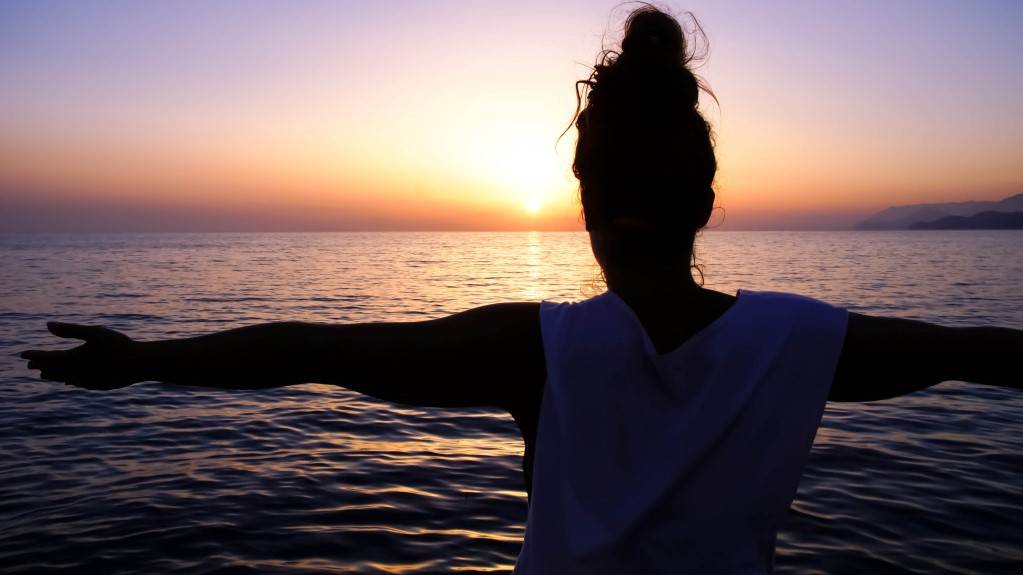Wir Triathleten machen eigentlich alles richtig. Wir begegnen der Welt, in der alle Menschen immer mehr sitzen – im Büro, auf dem Sofa, im Auto – mit jeder Menge Bewegung. Und trotzdem bleiben viele von uns nicht von Rückenschmerzen verschont. triathlon.de zeigt euch, warum das so ist und was ihr dagegen tun könnt.
Fast jeder Europäer leidet oder litt schon einmal unter Rückenschmerzen – die Zahlen verschiedener Studien liegen bei bis zu 90%. Ärzte raten zu mehr Bewegung – Schwimmen wird häufig empfohlen, ebenso Rad fahren und auch Laufen. Hauptsache aktiv sein, Hauptsache weg vom Bildschirm und raus aus der modernen Bequemlichkeit. Ziemlich fies, dass uns Triathleten Rückenschmerzen ebenso plagen können – wenn auch viel weniger oft als Couchpotatoes. Wenn es schmerzt, dann vor allem im unteren Rücken in Höhe der Lendenwirbelsäule oder weit oben im Nacken.
Wenn Triathleten „Rücken“ haben…
Gerade in der Vorzeigesportart Schwimmen kann es zu gemeinen Schmerzen im unteren Rücken kommen. Man hat das Gefühl, „in der Mitte durchzubrechen“. Vor allem Kraul- und Delfinschwimmen wird dann zur Qual. Beim Rad fahren hingegen quält uns eher der obere Nacken, wenn wir zu lange in der Aero-Position fahren.
Häufigster Grund für Rückenbeschwerden ist jedoch eine Blockade des Iliosakralgelenks (ISG). Etwa 70% aller Menschen hatte schon einmal Probleme mit einer ISG-Blockade. Das ISG verbindet die Wirbelsäule mit den Beckenschaufeln, es gibt also zwei IS-Gelenke. Die Verbindung im unteren Rücken ist durch starke Bänder und Muskeln in diesem Bereich ziemlich fest. Der Bewegungsspielraum ist nur minimal und eine willkürliche Bewegung ist uns gar nicht möglich. Trotzdem ist gerade eine Blockade im ISG die häufigste Ursache für Schmerzen im Lendenwirbelsäulenbereich. Die Schmerzen sitzen dementsprechend tief und sind besonders stark, wenn man sich nach vorne beugt oder die Beine seitlich abspreizt.
Von kleinen Fehltritten und der falschen Kopfhaltung
Rückenschmerzen
Die Ursachen für eine ISG-Blockade sind nicht triathlonspezifisch. Ausnahmsweise ist mal kein Übertraining Schuld (dazu kommen wir später). Häufigste Ursachen sind ein „Tritt ins Leere“, z.B. wenn man eine Treppenstufe oder eine Baumwurzel übersieht sowie falsches Heben und ruckartige Drehbewegungen im Oberkörper. Anatomische Schwächen wie eine Beinlängendifferenz oder eine Beckenverwringung können ISG-Blockaden begünstigen.
Die oben genannten Schmerzen durch Schwimmen oder Rad fahren in windunfreundlicher Position sind reine Kopfsache. Eine falsche Kopfhaltung beim Schwimmen verändert die gesamte Wasserlage zuungunsten des unteren Rückens. Beim Delfinschwimmen gehen wir oft automatisch ins Hohlkreuz; auch beim Brustschwimmen passiert das. Resultat: Verkürzte Rückenmuskeln – und Schmerzen.
Rückenschmerzen beim Rad fahren entstehen ebenfalls durch eine ungünstige Haltung, meist ist die Kopfhaltung daran Schuld. Setzen wir uns zu lange einer ungewohnten und extremen Position aus, streiken Nacken und Rücken irgendwann. Man fühlt sich dauerhaft „verspannt“.
Rückendeckung durch Lockerheit und Stärke
Ein Orthopäde oder Physiotherapeut erkennt schnell, ob eine ISG-Blockade vorliegt und kann sie meist genauso schnell wieder lösen. Wer die Schmerzen wiedererkennt und eine erneute ISG-Blockade vermutet, kann sich durch leichte (!) Eigenmobilisierung und Wärmebehandlung selbst Linderung verschaffen. Stillstand ist also eher Rückschritt. Nur locker sollte man es angehen lassen.
Treten neben der Blockade aber noch Taubheitsgefühle auf, sollte schnellstens ein Arzt aufgesucht werden. Das Gleiche gilt für lang anhaltende, starke Schmerzen. Auf keinen Fall solltet ihr die Zähne zusammenbeißen, den Schmerz ignorieren und einfach weitertrainieren.
Wer neben den drei Ausdauerdisziplinen auch regelmäßig Krafttraining für den Rumpf einbaut, schafft damit ein starkes Gerüst gegen Rückenschmerzen. In jeder Disziplin muss der Rumpf die Kräfte, die Arme und Beine produzieren, abfangen und weitergeben. Mit einer starken Mitte könnt ihr effektiver und ökonomischer schwimmen, Rad fahren und laufen – und vielen Ursachen für Rückenbeschwerden vorbeugen. Gleichzeitig hilft Stretching, die Flexibilität und Regeneration der Muskulatur zu unterstützen.
Wo drückt der Schuh noch?
Kein Artikel zu Verletzungen und Beschwerden im Triathlon kommt ohne die Themen Übertraining und Schuhwerk aus. Wie bereits erwähnt, können vor allem Beinlängendifferenzen aber auch andere Fehlstellungen langfristig Beschwerden auslösen – wenn sie nicht durch Einlagen und passendes Schuhwerk neutralisiert werden.
Genauso wichtig ist eine vernünftige Trainingsplanung. Bei Training, evtl. auch gepaart mit Berufs- und Alltagsstress, passen sich die trägeren Strukturen wie Knochen, Sehnen und Bindegewebe langsamer an als der Stoffwechsel und die Muskulatur. Gönnen wir uns also nicht genügend Pause, können eben jene Strukturen irgendwann nicht mehr mithalten. Auch der Rücken kann darunter leiden. Wer jetzt gerade aus dem Trainingslager kommt, darf sich also ruhig eine Tasse Tee machen und in der Badewanne die Füße hochlegen – das ist auch Balsam für den Rücken!




















